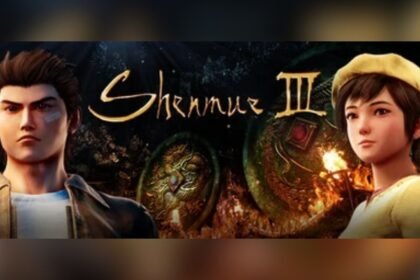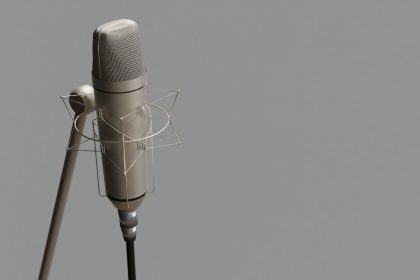Anime has come a long way since its inception, with its visual constantly evolving and transforming over the years. From the early age of anime to the modern era, the visual presentation of anime has seen significant shifts influenced by various factors and artists. This article explores the journey of anime art styles and the key influencers who have shaped them throughout the decades.
Anime Art Styles in the Early Age
Origins and Influences of Anime Art Styles
The origins of anime art styles can be traced back to the rich cultural heritage of Japan. Traditional Japanese art, such as ukiyo-e woodblock prints, played a role in shaping the early anime aesthetics. Additionally, manga, which is the Japanese comic book art form, and Western animation had a significant influence on the development of anime art styles.
Characteristics and Visual Elements
Early anime art styles were characterized by their simplicity and limited animation techniques. These styles focused on conveying the essence of characters and emotions through exaggerated expressions and distinctive visual elements. The use of bold lines, vibrant colors, and iconic designs became hallmarks of early anime.
Pioneering Artists
One of the most influential figures in the early age of anime was Osamu Tezuka. Often referred to as the “God of Manga,” Tezuka’s innovative storytelling and art style revolutionized the industry. His work, such as “Astro Boy” and “Kimba the White Lion,” not only captivated audiences but also set the foundation for future anime art styles.
Shotaro Ishinomori, often referred to as the “King of Manga,” also made significant contributions to the development of anime industries in the early age. His iconic series, such as “Cyborg 009” and “Kamen Rider,” showcased his dynamic and action-packed art style. Ishinomori’s visually striking character designs and compelling narratives captivated audiences and influenced subsequent generations of artists. His ability to create memorable characters and intense action sequences helped establish the foundation for the evolving art styles seen in anime today.
Anime Art Styles During the 80-90’s Era
Shifts in Visual Presentation
The 80-90’s era witnessed notable shifts in anime art styles. With advancements in animation techniques and a growing demand for more detailed visuals, character designs became more intricate and realistic. This era marked a departure from the simplicity of early anime, allowing for greater artistic expression and visual storytelling.
Genre-specific Styles
Different genres developed their own distinct art styles during this period. Mecha anime, characterized by giant robots and futuristic settings, showcased intricate mechanical designs and dynamic action sequences. Shoujo anime, aimed at young girls, featured delicate and elegant character designs with a focus on romance and emotions. Cyberpunk anime, known for its dystopian themes, incorporated futuristic and gritty visual elements.
Mamoru Oshii is an influential director and writer who made significant contributions through his thought-provoking films, particularly “Ghost in the Shell.” Oshii’s distinctive blend of cyberpunk aesthetics, philosophical themes, and atmospheric visuals challenged the boundaries of traditional anime storytelling. His visionary approach and meticulous attention to detail continue to inspire artists and filmmakers, leaving a lasting impact on the industry.
Aesthetic Experimentation
Artists like Hayao Miyazaki pushed the boundaries and make some breakthrough during the 80-90’s era. Miyazaki’s works, such as “Nausicaä of the Valley of the Wind” and “Princess Mononoke,” displayed a unique blend of fantasy, environmentalism, and intricate hand-drawn animation. His attention to detail and masterful storytelling influenced not only anime but also the global animation industry.
One of Hayao Miyazaki’s protege, Hideaki Anno is a visionary director and animator who made a significant impact through his groundbreaking work on the series “Neon Genesis Evangelion.” Anno’s distinct directing style, combined with his use of visual symbolism, psychological depth, and intricate mecha designs, revolutionized the mecha genre. His introspective approach to storytelling and unique artistic choices continue to inspire and influence anime creators to this day.
Modern Anime Art Styles in the Recent Era
Digital Revolution
The advent of digital technology has had a profound impact on modern anime art styles. With the introduction of digital tools and techniques, artists gained more flexibility and efficiency in creating complex and visually stunning animations. Digital animation allowed for smoother movements, vibrant color palettes, and intricate backgrounds, pushing the boundaries of what was previously possible.
Diverse Artistic Expressions
One notable aspect of modern anime art styles is the diversity and experimentation seen in artistic expressions. Artists and studios have embraced a wide range of styles, from traditional hand-drawn animation to computer-generated imagery (CGI) and hybrid techniques. This diversity has led to a rich tapestry of visual storytelling, catering to various tastes and preferences.
Global Influences
Globalization has played a significant role in shaping modern anime art styles. The exchange of ideas and cultural influences from different parts of the world has enriched the visual language of anime. Artists and animators have incorporated elements from various artistic traditions, resulting in a fusion of styles and aesthetics that transcend cultural boundaries.
Who Shaped the Significant Anime Art Styles Throughout the Decades?
Key Artists and Studios
Numerous influential artists and studios have left their mark throughout the decades. Studio Ghibli, co-founded by Hayao Miyazaki, has been instrumental in popularizing anime globally, with its distinct visual style and emotionally resonant storytelling. Other notable artists include Mamoru Oshii, known for his philosophical and visually stunning works, and Makoto Shinkai, whose films have captivated audiences with their breathtaking visuals and poignant narratives.
Directorial Vision
Directors have played a crucial role in shaping these movements. Their unique visions and directorial choices have influenced the visual aesthetics of anime. Satoshi Kon’s films, such as “Perfect Blue” and “Paprika,” showcased his signature psychological and surreal style. Kunihiko Ikuhara, known for directing series like “Revolutionary Girl Utena” and “Sailor Moon,” introduced innovative storytelling techniques and symbolism, pushing the boundaries of anime narratives.
Conclusion
The evolution of anime art styles throughout the decades has been a testament to the creativity and innovation within the industry. From the simplicity of early anime to the intricate and diverse styles of the modern era, anime has continuously evolved to captivate audiences worldwide. Influenced by various factors, such as cultural heritage, technological advancements, and visionary artists, anime art styles have become a powerful medium of artistic expression and storytelling. As the industry continues to grow and globalize, we can expect further experimentation and evolution of art styles, enriching the vibrant world of anime.













